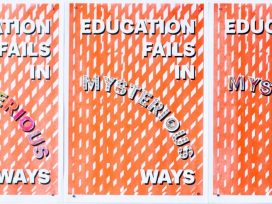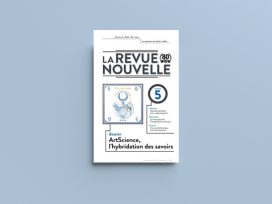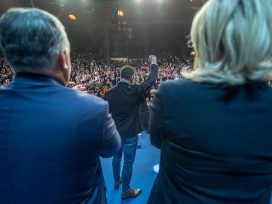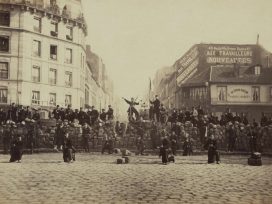In 2014, the image of central and eastern Europe has been influenced by two art-house period movies, which got rave reviews from critics and performed very well in box offices worldwide. The first was the comedy The Grand Budapest Hotel by American director Wes Anderson; the second, the drama Ida by Polish filmmaker Pawel Pawlikowski. Both featured superb casts and stunning cinematography, and both were period pieces that drew on fantasies about fin-de-siècle Mitteleuropa and traumatized post-war Europe.
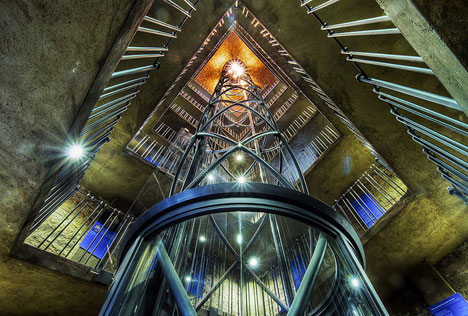
The way to the top of the Old Town City Hall, Prague. Outside, the Prague astronomical clock, which dates back to 1410, is mounted on the southern wall of the tower. But who will continue the central and eastern European tradition of innovation? Photo: Miroslav Petrasko. Source:Flickr
Tellingly, it is often renditions of the region’s turbulent or splendid past, rather than the present, that attract considerable attention. This tendency, however, does not apply exclusively to any particular corner of the world. Global culture is nostalgia-driven and often expresses contemporary anxieties in disguise, whether in the form of historical costumes or science fiction. The notion of a futuristic action movie set in dystopian Budapest or Riga is appealing, but the background would not necessarily convey more food for thought – to influence our understanding of the present or to shape the future – than would a seemingly old-fashioned adaptation of a canonic novel. In similar fashion, revolutionary gadgetry often conceals conservative ideas.
For centuries, repetition and reworking of old tropes were core principles of European culture, and the quest for modernity and novelty was a fairly new concept. Ultimately, rather than continuing the debate about the superiority of past over present or vice versa, we have embraced both. Partly due to this, naming a “challenger” in the world of arts and ideas is a tricky challenge in its own right. While technical progress is discernible and often spectacular, culture does not always advance in a series of drastic ruptures. Conversely, it is rather inclined to revisit tradition to find solutions to contemporary dilemmas.
Critics and context providers
Throughout our search for 100 New Europe Challengers, we were on the lookout for people who not only contribute to technological development, but also provide the necessary commentary, allowing changes to be put into context. We have chosen individuals and teams embedded in central and eastern Europe, who show courage and the potential for global outreach. They communicate with audiences using various, often intertwined, media, from printed manifestos through social media campaigns to performance art.
Some of the challengers have a proven record of institutional practice. Take Polish curator Adam Szymczyk (b. 1970), former director of Kunsthalle Basel and artistic director of the upcoming documenta 14 in 2017 in Kassel, one the most influential art events in the world. Szymczyk is committed to challenging the viewer, and often does so by taking risks and presenting works by lesser-known artists hailing from former Eastern Bloc countries. He summed up his program in the Gazeta Wyborcza daily, saying that “to prepare an exhibition is to furnish the brain, not to make a window display.” As a teenager, he was interested in punk music and Dadaism. The first of these forms a link with another favourite of the international art world, Bucharest-based artist Dan Perjovschi (b. 1961), who started spreading ideas in the cult Romanian magazine Decât o Revista and quickly moved with his provocative graffiti to the walls of galleries and museums from São Paulo to Reykjavik. While art promoted by Szymczyk is often considered demanding and puzzling, Perjovschi’s modus operandi is irony. His tongue-in-cheek drawings are political commentary created in response to current events. He has recently commented on the Ukrainian crisis, and often speaks out on global crises of inequality, debt, and surveillance.
The conviction that art is a powerful tool for social commentary underpins the practice of the N099 Theater from Tallinn, which dealt with growing populism in the Baltics with staged hyperpopulism in 2010. The theatre created a fictional political movement United Estonia (Ühtne Eesti), which exposed the backstage of political manipulation in the age of spin-doctors and social media. United Estonia was presented as a new political alternative and quickly attracted voter attention, partly because it avoided any particular platform. The program was to be presented during a spectacular party convention. In forty-four days they built up enormous anticipation using persuasive YouTube clips and the mythology of the Leader, which recalled both Nazi and Communist practices. The convention itself was a spectacular show, one of the biggest theatrical events in the recent history of European theatre. N099 reflected on the negative and populist traits of all the larger parties in their behavior, rhetoric, program, and campaigns.
This method recalls The Czech Dream (2004), a spoof documentary by Vit Klusák (b. 1980) and Filip Remund (b. 1973). It documented the now legendary opening of a fake hypermarket in the Czech countryside. Thanks to a massive advertising campaign, two art school graduates lured 3,000 prospective consumers to an empty field. The Czech Dream: The Hypermarket for a Better Life, as it was promoted, turned out to be nothing more than a facade. It denounced excessive, blind consumption and our docility to advertising.
However, Czechs are also very good at promoting civic engagement and interest in politics with short films. A work by Jiri Mádl (b. 1986) is a good example of this practice. Madl has grown into one of the important voices of young Czech artists. In 2010, he starred in the short clip Premluv bábu (Persuade Granny) withMartha Issová, directed by Petr Zelenka. The viral video encouraged young voters to participate in legislative elections, but discouraged voting for the Left, due to the Social Democrats’ willingness to cooperate with the largely unreformed Communist Party. It was by far the most serious attempt to lure young voters to the voting polls by a means of communication understood by younger demographics, those who do not use the Internet, but live on the Internet and alongside it, make friends and enemies online, plan parties and study sessions online, fall in love and break up online, as Polish poet Piotr Czerski (b. 1981) put it in We, the web kids manifesto in 2012. Czerski penned the article for a local newspaper in Gdansk, which asked him to explain the difference between “analog” and “digital” generations. His answer was quickly translated and republished under the Creative Commons license in various media outlets around the world, making him the voice of a generation whose experiences and expectations have been shaped by Internet use. Today, however, he is more critical of the transformative power of the web, criticizing young people’s superficial participation in political life, and encouraging them to take a more active role in reshaping Polish society.
People such us Perjovschi, Madl, and Czerski fuel our discussions of the present and future of our political systems and serve as watchdogs, keeping a critical eye on the transformation undergone by our societies. Their impact is difficult to measure in the language of metrics, as culture is about values that are not exclusively monetary. In a way that the intelligentsia once did, culture challengers today not only identify the key transformational ideas of our times, but also have the courage to reflect upon them, criticize, and ultimately provide us with a better understanding of the direction in which we are heading. We have managed to acknowledge only a handful of such visionaries from central and eastern Europe with this NE100 list, but the region is bustling with brilliant young minds in the world of arts and ideas. With their direction, we are less likely to get lost.
